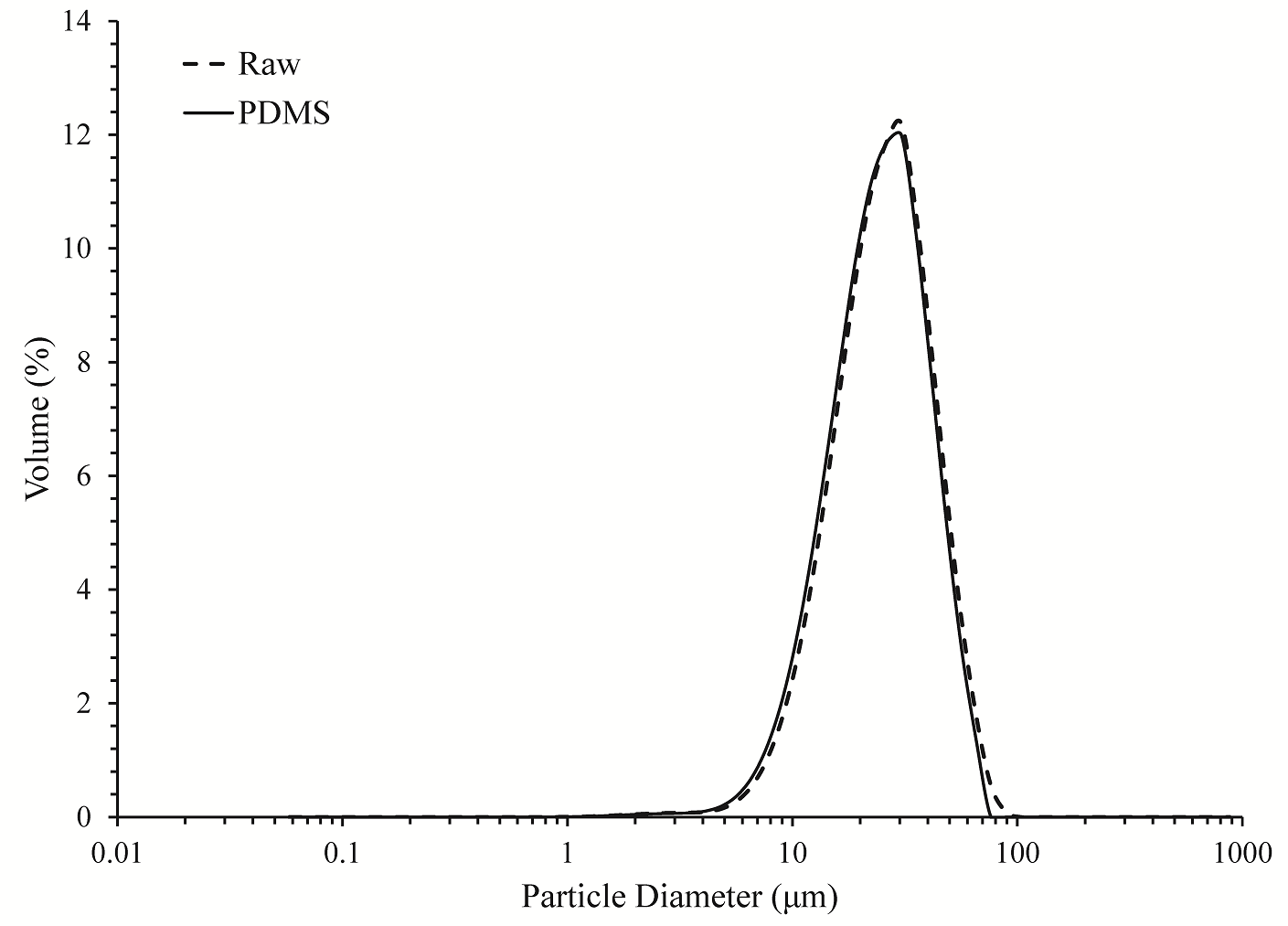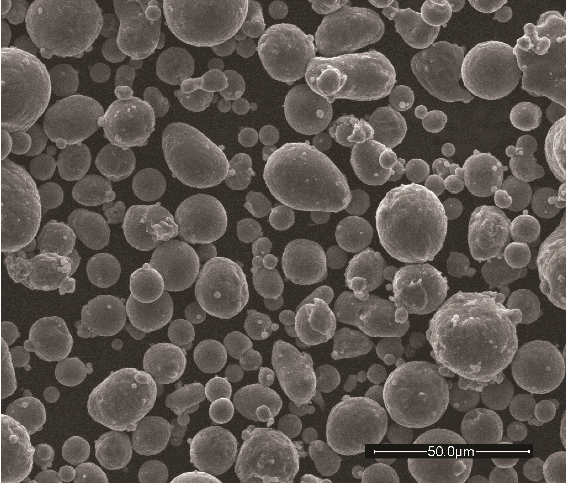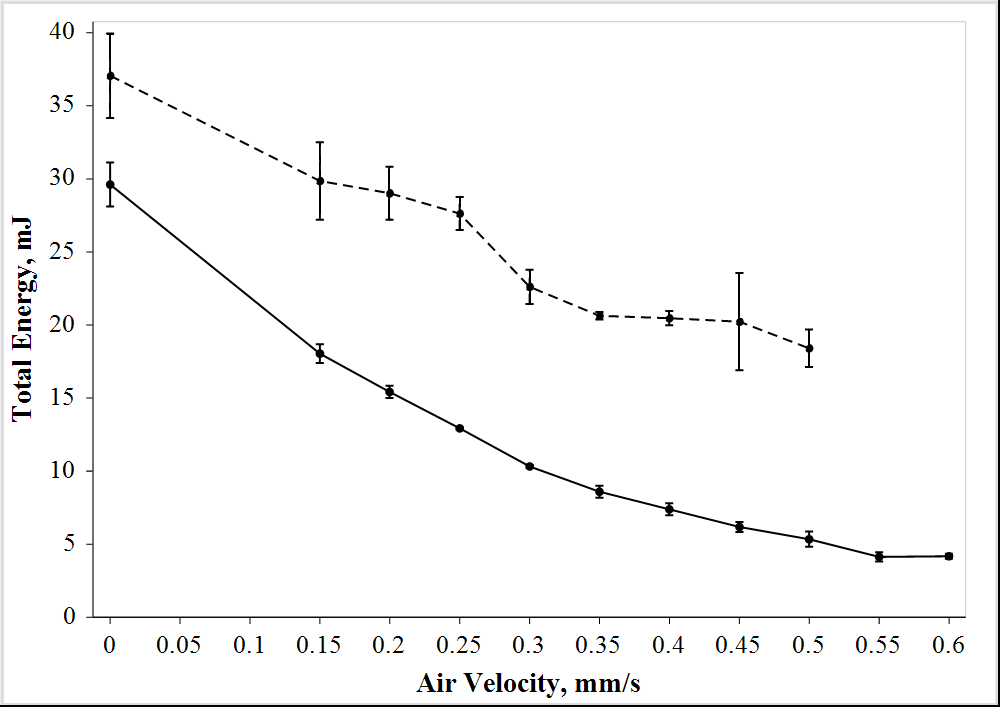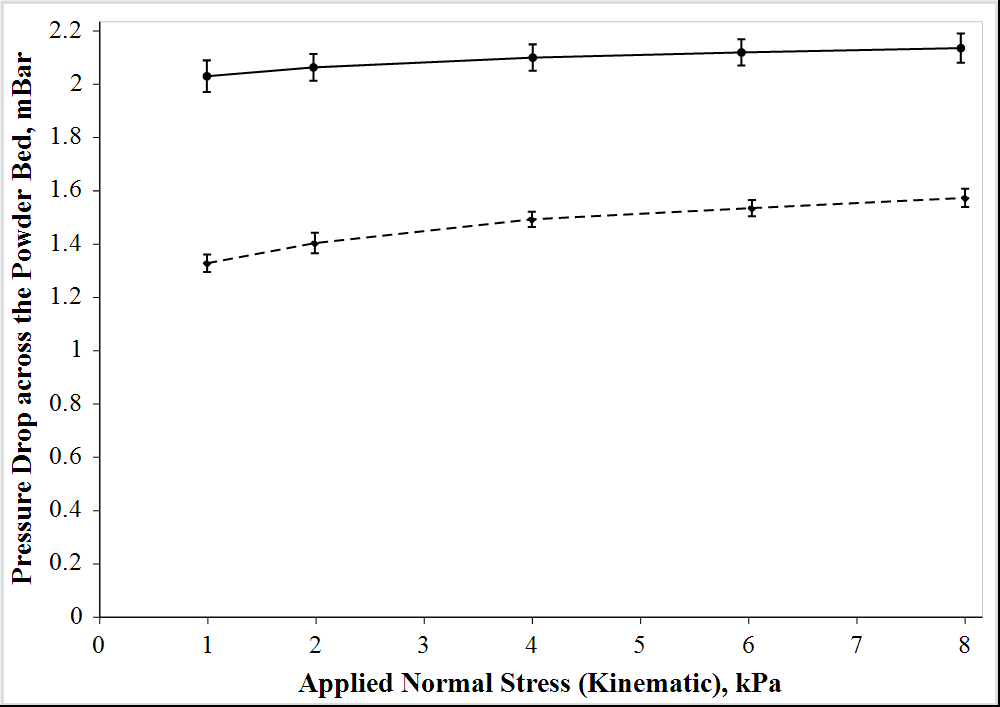Tim FreemanNovember 18, 2020
Tag: powders , Application of the Surface Coating , Surface Treatment
An important point to appreciate about powders is that they are essentially three-phase systems consisting of solid particles, liquid (often relatively poorly controlled levels of water) and gas, typically air. This is why particle characterisation alone cannot reliably differentiate samples when it is bulk powder behaviour – flowability, for example – that defines value and/or performance. It also highlights the limitations of relatively simple testing techniques which often have poorly defined methodologies and attempt to capture the complexities of powders with just a single number. For example, a promptly analysed sample may exhibit different flowability from an identical sample that has deaerated upon standing if sample preparation does not eliminate such effects. Both values could also be relevant depending on the process of interest.
These issues are discussed in detail in our e-books1 and illustrated in practice by the comprehensive experimental study conducted by researchers at the Pennsylvania State University2 that forms the basis of this application note. This work involved the application of a hydrophobic surface coating to fine aluminium particles and extensive characterisation of the resulting materials. The data illustrate how powder flow properties can be substantially altered, with negligible changes in particle size, and demonstrate the limitations of simple flow measurement techniques for assessing how changes in flowability will impact process performance.
Experimental Method: Application of the Surface Coating
Metallic aluminium powder with a d50 (median diameter) of approximately 20 µm (Lot No. 12-3008; Valimet, USA) was surface treated with a hydrophobic polymer, polydimethylsiloxane (PDMS), via a gas phase deposition process. The PDMS used had terminal hydroxyl groups, an Mn (number average molecular weight) of ~550 g/mol and a viscosity of approximately 25 cSt (Aldrich, USA). Surface treatment was carried out in a simple, in-house fabricated, gas deposition apparatus using ultra-high purity nitrogen as the fluidising gas.
Aluminium powder was loaded into the apparatus in batches of 300g and then held at approximately 100oC for one hour, prior to treatment, to remove physisorbed water; the powder was subsequently maintained at this temperature for the duration of the process. The PDMS was volatilised at around 250oC, mixed with nitrogen and passed over the aluminium powder for a period of approximately 4 hours. The resulting powders were subjected to extensive chemical and physical characterisation. For full details of the deposition procedure and all analyses please see reference 2.
The Impact of Surface Treatment: (1) Particle Size and Shape
Particle size data for the raw and treated aluminium powders (Mastersizer, Malvern Panalytical, UK) indicate that coating has a negligible effect on particle size distribution (see figure 1). Since differences in particle size and/or particle size distribution are a common rationale for changes in flowability this result makes investigation of the impact of surface coating on flow properties particularly interesting.

Figure 1 - Surface treatment has negligible impact on the particle size distribution of the aluminium particles

Figure 2 - A scanning electron micrograph of the raw aluminium powder confirms the regular shape
and relatively smooth surface of the gas atomised particles
A scanning electron micrograph of the raw aluminium powder provides insight into particle shape (see figure 2). The particles exhibit the regular, spherical shape and smooth surfaces typical of gas atomised metal powders with evidence of smaller ‘satellites’ on some of the larger particles. A full description of the spectroscopic analysis of the surface coating is beyond the scope of this note but these data reveal that the deposition process results in complete coverage of the aluminium particles with a fine, uniform, siloxane-like layer. The deposition process causes minimal disruption of the PDMS polymer backbone and there is no indication that it alters the form of the aluminium particles.
The Impact of Surface Treatment: (2) Tapped Density Measurements
Both raw and treated powders were subjected to tapped density measurements (Autotap, Quantachrome, USA) to provide simple flow characterisation. Tapped density measurements determine the change in density induced by a specified number of ‘taps’, correlating this with powder flow behaviour via the metrics Hausner Ratio (HR) and Carr’s Index (CI – also known as Carr’s Compressibility Index), where:
HR = ρT/ρA
and
CI = (ρT-ρA)/ρT * 100
(ρT is tapped density and ρA is apparent density)
In this case, the powders were tapped at a rate of 260 taps/min until no further change in density occurred (~around 3000 taps).
The HR of the raw powder was found to be 1.38 classifying it as an ‘A-C’ type powder, a powder in the transition region between cohesive and aeratable behaviour. Surface treatment reduces the HR of the powder to 1.24, putting it just within the aeratable classification (1.25 and below) and indicating that coating has improved flowability. In CI terms, powder is changed from very poor flowing (a CI of 30) to fair-flowing (a CI of 19).
A rationale for these results is that adsorption of the hydrophobic PDMS on the surface of the particles reduces inter-particulate forces of cohesion, decreasing void spaces and agglomeration within the bed and increasing density; the tapped density of the treated powder is ~14% higher than that of the raw powder. However, the data provide relatively limited insight into what this change in cohesion means in terms of how the powder is likely to behave within a process, particularly with respect to fluidisation.
The Impact of Surface Treatment: (3) Dynamic, Bulk & Shear Powder Testing
The raw and treated powders were subject to dynamic, bulk and shear testing (FT4 Powder Rheometer®, Freeman Technology, UK) to provide a comprehensive, multi-faceted investigation of the changes induced by surface treatment. Dynamic powder properties are generated from measurements of the axial and rotational forces (torque) acting on a helical blade as it rotates along a prescribed path through a powder sample. They include:
Basic Flowability Energy (BFE): which quantifies confined flow behaviour (forced flow) and is measured during a downward traverse of the blade
Specific Energy (SE): which quantifies unconfined flow behaviour (gravity flow) and is measured during an upward traverse of the blade
Stability Index (SI): which quantifies whether the powder is physically stable with respect to repeat testing and is the ratio of BFE measured after a defined number of test cycles to initial BFE.
Flow Rate Index (FRI): which quantifies the impact of changes in the rate of forced flow and is the ratio of BFE at a slow blade tip speed (10 mm/s) to initial BFE (which is measured at a tip speed of 100 mm/s)
Aeration Ratio (AR): which quantifies the sensitivity of the powder to aeration and is the ratio of BFE to Aerated Energy (AE), where AE is the BFE measured with air flowing upwards through the sample at a defined velocity (in this case at 0.5 mm/s).
Shear cell analysis involves measurement of the forces required to shear one consolidated powder plane relative to another and generates properties including unconfined yield strength (UYS) and flow function coefficient (ffc) that quantify a powder’s resistance to the onset of flow following consolidation. Reference 3 provides a full description of the dynamic, shear and bulk (compressibility and permeability) test methodologies applied and the results obtained are summarised in table 2.

Table 1 - Summary of data generated from dynamic, shear and bulk powder testing
The first thing to note from these data is that dynamic testing shows that both the raw and treated powders are extremely stable (with SI values of 0.95 and 0.98 respectively). This suggests that the surface treatment has a robust effect, with the coating not easily eroded or detached. Both powders also exhibit similar FRI values. FRI values have been shown to correlate with blending performance, and more specifically, sensitivity to blending speed [4], which in this case appears to be unaffected by the surface treatment. Conversely, the treated powder has a higher BFE than the raw powder, a result attributable to its higher density and enhanced packing efficiency. The resistance associated with forced, confined movement of the powder bulk, such as induced by a screw conveyor for example, has increased.
The SE value of the treated powder is appreciably lower than that of the raw powder. SE quantifies flow behaviour under gravity, rather than the forcing conditions applied during BFE measurement, and tends to be strongly influenced by mechanical interlocking and inter-particular friction within the bed. The SE values therefore provide further evidence that an improvement in flow behaviour is likely to be observed under certain conditions. This is reinforced by the change in compressibility when subjected to a consolidating stress of 8kPa, the treated sample exhibits a compressibility ~32% lower than the raw powder. A reduction in the strength of inter-particular forces promotes more efficient packing and less voidage within the powder bed, resulting in reduced compressibility. The shear data are similarly consistent with a reduction in UYS of around 50%, and an accompanying change in classification of the powder (based on ffc) from ‘Easy flowing’ to ‘Free flowing’ resulting from surface treatment.

Figure 3 - Aeration curves show that the treated powder (solid line) aerates smoothly
to the point of fluidisation while the raw powder (dashed line) presents much greater resistance to aeration

Figure 4 - Despite a reduction in cohesion the permeability of the treated powder (solid line) is lower
– measured pressure drop is higher - than that of raw powder (dashed), possibly due to changes in packing efficiency.
Interestingly, the permeability (k) of the treated powder is lower than that of the raw powder, a somewhat counter-intuitive result given that high permeability is often conducive to flow. Permeability is determined by measuring the pressure drop across the bed at a defined air flow rate, as a function of applied normal stress. A rationale for this result is that the efficiently packed state of the treated powder inhibits the transmission of air through the bed, offsetting the reduction in resistance typically observed with a decrease in the cohesive forces between particles. In addition, the permeability of the raw powder is more dependent on stress conditions than that of the treated powder, due to its greater compressibility. Permeability is especially relevant to behaviour in vacuum and pneumatic transfer, as well as in filling operations, with low permeability directly associated with low or pulsatile hopper discharge flow and inefficient filling.
In Summary
This study clearly highlights the limitations of using particle characterisation and/or simple flow techniques to fully scope powder behaviour. The surface coating applied to the aluminium powders did not result in a significant change in particle size or shape, rendering particle characterisation unhelpful in terms of predicting changes in flowability. Tapped density methods were successful in detecting that surface treatment had reduced cohesion, promoting better packing of the powder bed, an increase in density and an improved flowability classification. However, they provided little insight as to what this might mean with respect to the relative processing performance of the two powders, notably with respect to the how each would respond to air.
Dynamic testing proved particularly helpful in this respect, clearly differentiating the aeration performance of the raw and treated powders. It showed that while the raw powder exhibited erratic behaviour in response to increasing air velocity, never fully fluidising, the treated powder aerated smoothly, fluidising at a velocity of around 0.30 mm/s. Furthermore, dynamic testing delivered insight regarding the stability of the powder and highlighted the fact that surface coating resulted in changes to certain variables – permeability and basic flowability energy – that could be detrimental to performance in certain processes. These multi-faceted data support the development of a more complete understanding of the impact of the changes in density and cohesion, within the context of process performance, and illustrate the value that can be gained from advanced powder testing techniques.
References/Further Reading
1 The Freeman Technology e-books ‘An Introduction to Powders’ and ‘Choosing a Powder Tester’ both provide valuable complementary background reading in this area. Access at:
https://www.freemantech.co.uk/learn/ebooks
2 B. Ludwig and J. L. Gray ‘The effect of gas phase polydimethylsiloxane surface treatment of metallic aluminium particles: Surface characterization and flow behavior’. Particuology 30 (2017) 92 – 101.
3 R. Freeman, Measuring the flow properties of consolidated, conditioned and aerated powders — A comparative study using a powder rheometer and a rotational shear cell, Powder Technology, 174 (2007) 25-33.
4 T. Freeman and B. Armstrong ‘Using powder characterisation methods to assess blending behaviour’ White paper available to download at - https://www.freemantech.co.uk/_news_view/using-powder-characterisation-methods
Acknowledgements
Thanks to Dr Bellamarie Ludwig, Assistant Research Professor at Pennsylvania State University, for her assistance in drafting this content.
Also, thanks to Julie Anderson from the Materials Characterization Laboratory for the Scanning Electron Microscopy images shown in Figure 2.
Author Biography - Tim Freeman, Managing Director, Freeman Technology

Tim Freeman is Managing Director of powder characterisation company Freeman Technology for whom he has worked since the late 1990s. He was instrumental in the design and continuing development of the FT4 Powder Rheometer® and the Uniaxial Powder Tester. Through his work with various professional bodies, and involvement in industry initiatives, Tim is an established contributor to wider developments in powder processing.
Tim has a degree in Mechatronics from the University of Sussex in the UK. He is a mentor on a number of project groups for the Engineering Research Center for Structured Organic Particulate Systems in the US and a frequent contributor to industry conferences in the area of powder characterisation and processing. A past Chair of the American Association of Pharmaceutical Scientists (AAPS) Process Analytical Technology Focus Group Tim is a member of the Editorial Advisory Board of Pharmaceutical Technology and features on the Industry Expert Panel in European Pharmaceutical Review magazine. Tim is also a committee member of the Particle Technology Special Interest Group at the Institute of Chemical Engineers, Vice-Chair of the D18.24 sub-committee on the Characterisation and Handling of Powders and Bulk Solids at ASTM and a member of the United States Pharmacopeial (USP) General Chapters Physical Analysis Expert Committee (GC-PA EC).


Contact Us
Tel: (+86) 400 610 1188
WhatsApp/Telegram/Wechat: +86 13621645194
Follow Us:




 Pharma Sources Insight January 2025
Pharma Sources Insight January 2025


